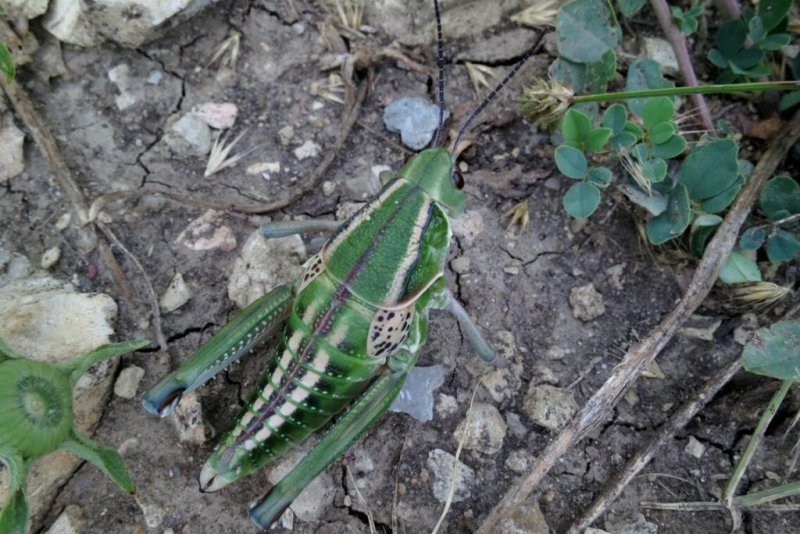As health of prairie grasses decline, so does number of grasshoppers

A plains lubber grasshopper, Brachystola magna, is pictured in Konza Prairie, a preserve in northeast Kansas. Photo by Ellen Welti/University of Oklahoma
March 11 (UPI) -- There are 30 percent fewer grasshoppers living in a Kansas grassland preserve than there were 20 years ago, and new research suggests the herbivore's decline is a result of the reduction in nutrients typically found in wild grasses.
Usually, declines in species abundance, whether insects or mammals, are linked with habitat destruction. But the latest research -- published this week in the journal PNAS -- suggests declines in the nutritional qualities of grass, even in preserved habitats, can spur declines in the number of herbivores.
"One surprise was that grasshopper abundances in this large native tallgrass prairie reserve are declining," lead study author Ellen Welti, ecologist at the University of Oklahoma, said in a news release. "This grassland appears to be a stable and prime habitat for grasshoppers and yet even here, we are seeing 2 percent annual declines."
The latest analysis suggests climate change is to blame. Researchers measured declining levels of nitrogen, phosphorus and sodium in the grass growing in Konza Prairie, a large reserve in northeast Kansas. Grass growth rates have increased as CO2 levels rise, but there is less and less nutrients to nourish new grass.
"The greenhouse gas CO2 is heating the Earth and acidifying its oceans, but it is also the main ingredient in the sugars, starches, and cellulose of plants," said Michael Kaspari, professor of ecology at Oklahoma. "When we pump the atmosphere full of CO2, we build more plants. But, with no additional nutrients to fertilize them, the nutritional value of each bite is diluted. Mouthful by mouthful, the prairie provides less and less food to the grasshoppers. Hence, their decline."
Grassland covers more than 30 percent of Earth's land mass, and grasshoppers are one of the most abundance grass-eaters. It's like similar declines are occurring among herbivore populations around the globe.
"The mechanism of grasshopper declines that we propose in this study -- declining plant quality with increasing atmospheric CO2 -- is expected to be global in scope and pose the largest challenge to herbivores," Kaspari said. "It is notable that a large number of previous studies documenting insect declines were on another herbivorous group -- butterflies and moths -- but few of these papers identified a mechanism causing declines."
No comments:
Post a Comment